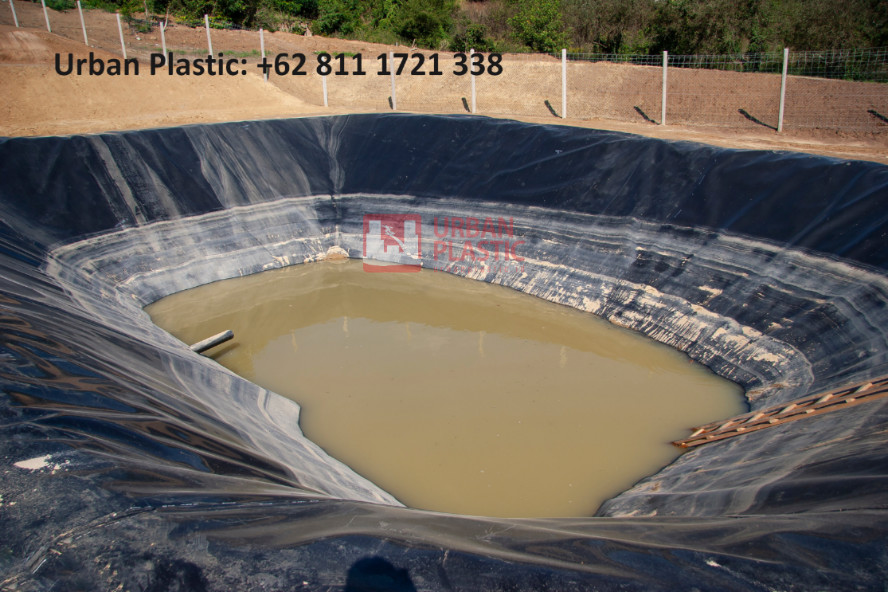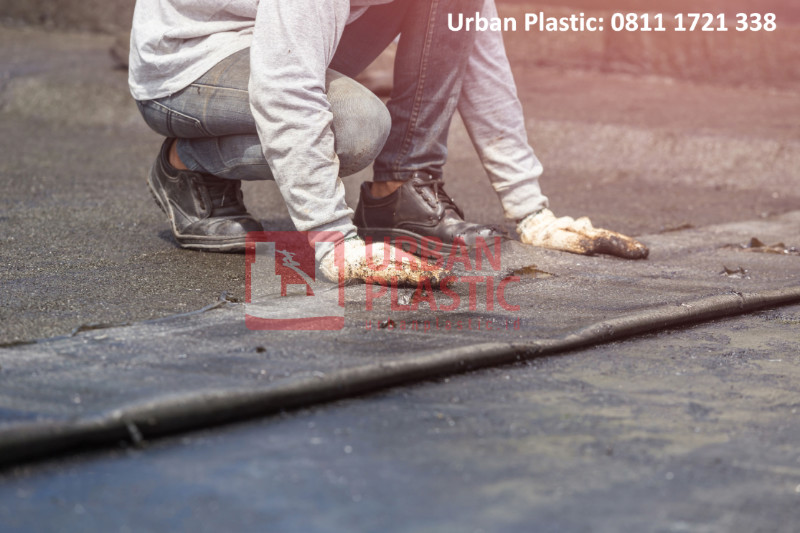Urban Plastic team will discuss in detail about geomembrane landfill, from its function in waste management, technical specifications, to proper installation methods. If you want to understand how this technology plays a role in modern waste disposal systems, this article will provide complete and easy-to-understand information.
What is a Geomembrane Landfill?
Landfill geomembrane is a synthetic impermeable layer used in landfill systems to prevent environmental pollution. This material is generally made from High-Density Polyethylene (HDPE) which has high resistance to chemicals, UV rays, and extreme mechanical stress. Its main function is as a barrier that prevents leachate from seeping into the soil and contaminating groundwater.
In addition to protecting the environment, geomembrane landfills also play a role in controlling methane gas produced from decomposing waste. Methane is a greenhouse gas that contributes to global warming if released into the atmosphere without control. With the right geomembrane system, this gas can be captured and processed into an alternative energy source.

Why Geomembrane is Required in Landfills?
Landfill systems without geomembrane are at high risk of soil and water pollution. The leachate produced from the waste piles contains various harmful substances, such as heavy metals and organic compounds that can damage the ecosystem. If not managed properly, this pollution can spread to the surrounding environment and endanger human health.
In addition, geomembrane also helps in extending the life of the landfill. With this impermeable layer, waste can be organized in a more structured manner, reducing soil movement that can cause landslides, and preventing rainwater infiltration that can accelerate the production of leachate.
How is the Geomembrane Landfill Installation Process?
Geomembrane installation must be done carefully to avoid leaks that can reduce its effectiveness. The installation stages include several main steps.
The first step is ground surface preparation, where the landfill area must be leveled and cleaned of sharp objects that could potentially damage the geomembrane sheets. After that, the geomembrane is stretched over the landfill surface according to the design pattern, ensuring that each sheet has sufficient overlap for splicing.
After the geomembrane is installed, the joining process between the sheets is carried out by hot wedge welding or extrusion welding methods, which ensure the joints to be strong, watertight, and resistant to external pressure. This joining technique is very important as it determines the success of the geomembrane barrier system in preventing leaks.
The final stage is testing and inspection, where various leak test methods such as vacuum test, air pressure test, or spark test are conducted to ensure that there are no gaps or cracks in the geomembrane layer. This test is very important to guarantee the effectiveness of the geomembrane before the landfill is put into use.
Recommended Landfill Geomembrane Specifications
In landfill projects, the geomembrane used usually has certain specifications that ensure resistance to extreme environmental conditions. HDPE geomembrane is the top choice because it has very low permeability, making it effective in preventing infiltration of leachate liquids.
Geomembranes used in landfills are usually between 1.5 mm to 2.5 mm thick, depending on the design and capacity of the landfill. It must also meet international quality standards such as ASTM, ISO and SNI, which ensure that it has been tested for mechanical durability, chemical resistance and longevity.

Advantages of Geomembrane Over Conventional Methods
Compared to conventional methods such as the use of clay as a protective layer, geomembrane offers a more efficient and durable solution. Clay has properties that can change due to environmental factors, such as changes in humidity and pressure, which can cause cracks and leaks over a period of time.
In contrast, the geomembrane remains stable despite prolonged exposure to chemicals or UV light. The service life of geomembrane can reach more than 50 years, making it a top choice for landfill projects that require a sustainable and cost-effective solution in the long run.
In addition to being more durable, the use of geomembrane also allows the landfill system to be more structured and efficient. Waste can be better managed, reducing the risk of environmental pollution and accelerating a safer decomposition process.
Also Read: Installation Services for Geomembrane Indonesia
Conclusion
The use of geomembrane landfills is the most effective solution to prevent environmental pollution and improve the efficiency of the waste disposal system. With this technology, landfills can operate more safely, durably, and environmentally friendly.
If you need high-quality HDPE geomembrane for landfill projects, Urban Plastic provides a variety of specifications to suit your project needs. We are ready to help with international standard quality materials and professional installation services. Feel free to contact us to get the best consultation and quote!
For more information about Geomembrane please contact: Whatsapp/Mobile Phone: +62 811 9151 338 (Ms. Anna) or Email :info@urbanplastic.id

